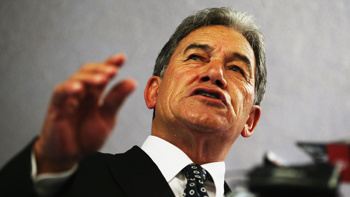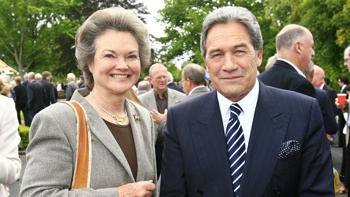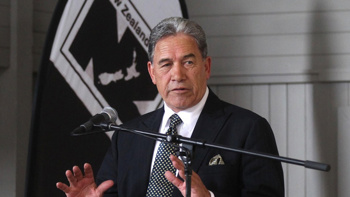Year 4 to 8 students will have one less classmate under Labour’s new education announcement which reduces the teacher/student ratio from 1:29 to 1:28 with the hope it will reverse declining achievement during those years.
The change, expected to cost $106 million over five years, would be initiated from 2025 and would mean an extra 320 fulltime primary and intermediate school teachers in classrooms across the country.
Half of those teachers will be working by the middle of next year.
Speaking to media from Auckland’s Remuera Intermediate School, Prime Minister Chris Hipkins said Year 4-8 have the highest teacher-to-student ratio across the education system and there have been declining levels of achievement during that time period.
Under the Labour Government, teacher numbers had been increased by about 3000, Hipkins said.
He was confident recruitment of the 320 extra teachers needed could be done.
Hipkins rebuffed National’s criticism of the policy - the Opposition says today’s policy was to help Labour get elected - and said that when National last spoke about class sizes, the party was trying to increase them.
Education Minister Jan Tinetti talked about the Ministerial Advisory Group (MAG) that will look at class sizes more generally. She said she wanted to see advice reasonably quickly so any changes could be progressed smartly.
“Reducing the number of students in each class will take some pressure off our hard-working teachers and allow them to spend more one-on-one time with each student. It means they can focus on what they do best – teaching our young people the basics well so they can go on to succeed,” Tinetti said.
Asked whether the reduction was enough, Hipkins said the way schools used their teachers was up to them but the extra 320 teachers nationally would be a helpful resource and schools could use them in the way that best suited them.
“I’m certainly not saying it’s the last step,” Hipkins said, indicating he would be in favour of more teacher increases.
The advisory group would report back in three months, Tinetti said.
There will be more choices on class sizes in coming years given the decreasing birth rate, Hipkins said. That trend was modelled by the Ministry of Education.
Schools with smaller roles that operate below the 1:28 ratio wouldn’t see any change to class sizes.
An equivalent package for Kaupapa Māori kura and other settings, where ratios of 1:18 are already in place for Years 2-8 would also be put in place following consultation conducted by the Ministry of Education.
A Ministerial Advisory Group will also be created to examine class sizes over the longer term.
“I want to get a deeper understanding of the key areas where change is most needed,” Tinetti said.
“I want this work to happen fast so I’ve asked for the Terms of Reference to look at the challenges our teachers and students currently face in the classroom, what our school leadership and management need, what any further decrease to class sizes will cost and whether it is achievable.”
The 2019 National Monitoring Study of Student Achievement found in writing, 63 per cent of students were achieving at the expected level in Year 4, dropping to only 35 per cent achieving as expected by Year 8. For reading, the corresponding numbers were 63 per cent at Year 4 dropping to 56 per cent by Year 8.
The 2018 NMSSA mathematics and statistics study had similar results, with 81 per cent of Year 4 achieving at the expected level, compared with 45 per cent by Year 8.
Ahead of the 2014 election, Labour focused on reducing class sizes to one teacher to 26 students at primary and a maximum average class size of 23 at secondary schools. Those specific goals were later dropped.
Hipkins, then the party’s education spokesman, told the Herald at the time the 2014 policy to cut class sizes would have been funded by scrapping National’s then flagship education policy, Investing in Educational Success (IES).
/cloudfront-ap-southeast-2.images.arcpublishing.com/nzme/6NYTHZFFPRDEVAXL7GQ2ANGTKA.jpg) National leader Christopher Luxon wants students to have an hour of reading, writing and maths every day. Photo / Mark Mitchell
National leader Christopher Luxon wants students to have an hour of reading, writing and maths every day. Photo / Mark Mitchell
Last month, National unveiled its plan for education which included primary and intermediate schools being required to teach students for at least one hour a day on each of the topics of reading, writing and maths lessons – and children will be tested on them at least twice a year in a new version of the controversial National Standards.
National Party leader Christopher Luxon said National would target getting 80 per cent of Year 8 students at or above the expected curriculum level for their age in reading, writing, maths and science – and to return New Zealand to the top 10 of the OECD’s PISA rankings by 2033.
He said the Royal Society had concluded an hour a day of maths lessons was required and the ERO had highlighted concerns about the decline in basic reading skills.
Tinetti, a former principal, told Newstalk ZB she was “disappointed” education had become a political football and urged the Opposition to co-operate on finding evidence-based solutions to address problems in the sector.
“This causes disruption every time we have a change in government.”
Take your Radio, Podcasts and Music with you









